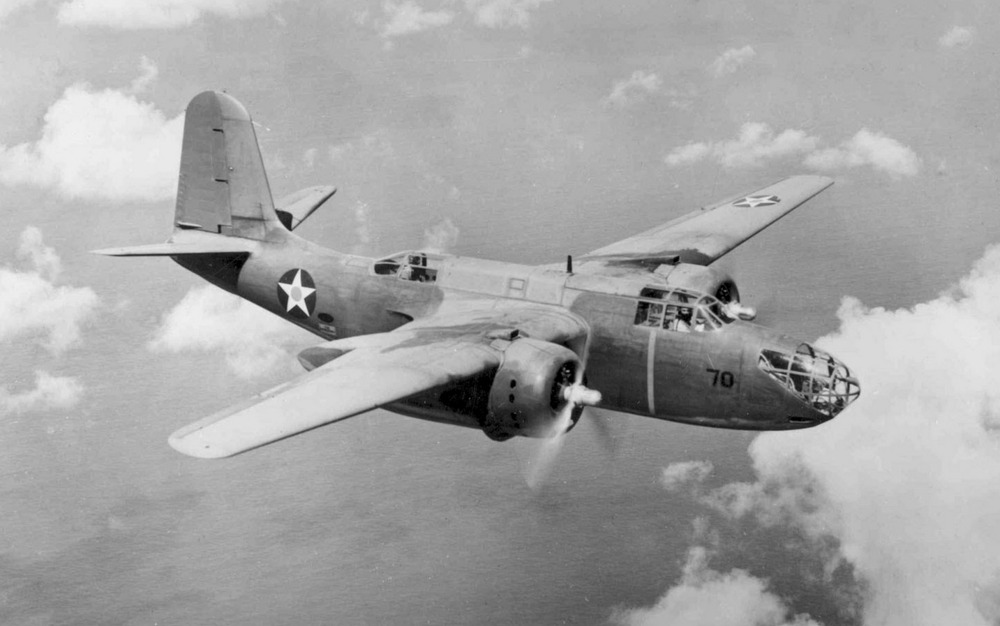Description and History
As the turbo-supercharged A-20 was ordered to serve as a high-altitude light bomber, the A-20A was procured as its counterpart for low- and medium-altitude attack missions, to address the United States Army Air Corps’ need for a modern, versatile light bomber.
The A-20A closely resembled the A-20 in design but omitted the complex and bulky turbosuperchargers, instead using two-speed mechanical superchargers. Its engines were largely similar to those used on the French DB-7A and British DB-7B, each producing 1,600 horsepower at takeoff. Armament and bombload remained the same as the original A-20: four forward-firing .30-caliber machine guns, plus two defensive guns, one in a dorsal position and the other in the ventral rear.
The first A-20A was completed in August 1940 and took to the air for the first time on September 6, 1940, ahead of the turbocharged A-20’s maiden flight. Deliveries to the USAAC began on November 30, 1940. The original order for 123 aircraft was later expanded by 20 more, bringing the total to 143. Early production models featured cooling vents along the engine cowlings, but these were eventually removed as they proved unnecessary.
The 3rd Bomb Group based in Savannah, Georgia, became the primary operator of the A-20A, while other units, including the 15th Bomb Squadron (Light) at Lawson Field, the 46th Bombardment Group (Light) at Bowman Field, Kentucky, and the 48th Bombardment Group (Light) at Will Rogers Field, Oklahoma, also received aircraft. Additionally, Air Corps units in the Canal Zone and the Territory of Hawaii each received twelve A-20As.
The A-20A became the first Havoc variant to see combat when two were destroyed on the ground during the surprise Japanese attack on Pearl Harbor on December 7, 1941. By late 1942, the Army directed that all remaining A-20As be restricted from combat and redesignated RA-20A for restricted or training use. Despite this, the A-20A was praised for its excellent performance and handling, encouraging the continued development of the Havoc series and leading to more capable variants.
Nine A-20As were transferred to the Royal Australian Air Force in 1943 under the Lend-Lease program, making Australia the only known foreign operator of this variant. One additional A-20A was briefly leased to the US Navy, where it was redesignated BD-1 and used as a high-speed utility aircraft for towing aerial gunnery targets at realistic combat speeds.







